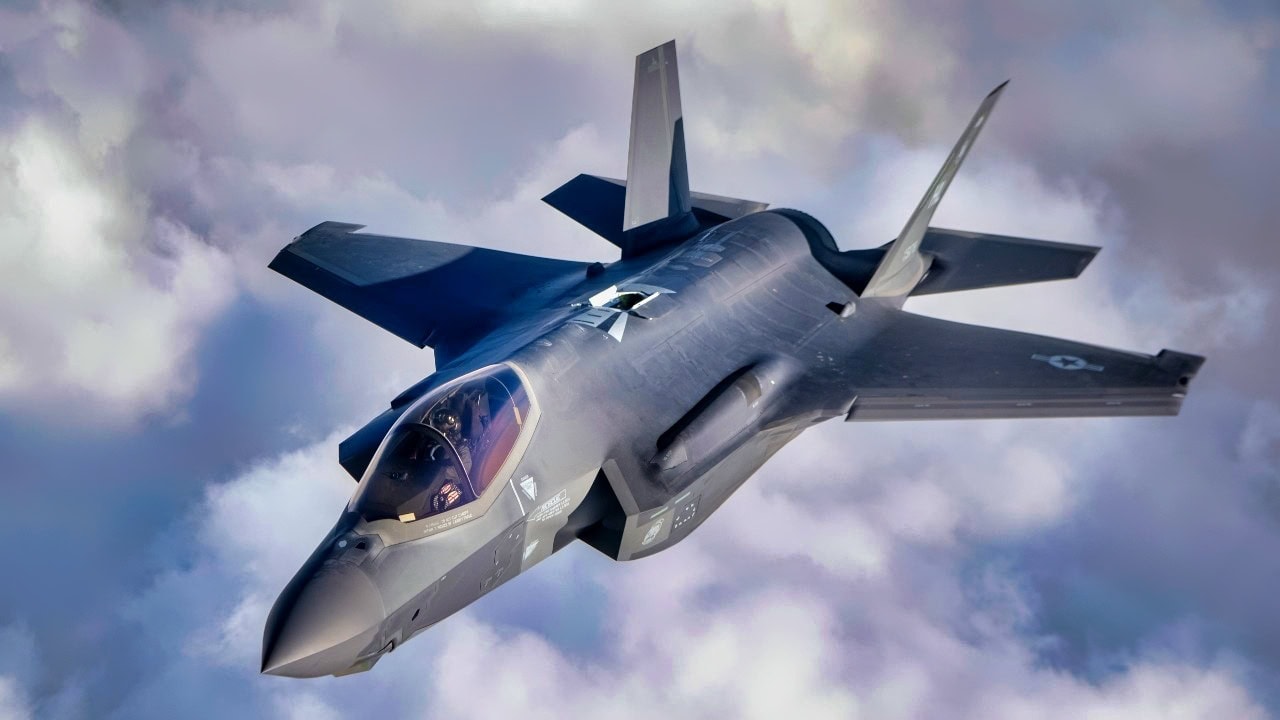Article Summary: U.S. allies are increasingly worried about a rumored “kill switch” in the F-35 Joint Strike Fighter jets, fearing the U.S. could remotely disable the aircraft due to geopolitical disagreements.
-Despite concerns, no actual “kill switch” exists. However, the F-35 does rely on essential American-managed software updates (Mission Data Files) to remain operationally effective.
-Countries like Germany and Canada, amid tensions with the U.S., fear potential limitations or disruptions.
The F-35 ‘Kill Switch’ Controversy, Explained
The United States has long practiced a strategy that I call “fighter plane diplomacy,” in which it cements better international ties by making fighter jets available for export. This has been accomplished through the sale of F-35 Lightning IIs to more than a dozen countries over the years. But now, due to America’s pause on Ukrainian military aid and intelligence support and the threat of tariffs, some European and North American partners no longer subscribe to the fighter plane diplomacy stratagem.
What Is Real and What Is a Myth?
In fact, the allies are getting downright upset and suspicious, enough even to believe that the Americans could “switch off” an F-35’s “flying computer” system and render the warplane combat ineffective.
But is this “kill switch” real or something imagined by frustrated U.S. allies who fly or order the F-35?
The kill switch is supposedly a remote-control overseen by the Pentagon. Under this conspiracy theory, the DOD could force Lockheed Martin to shut the airplane down due to unhappiness with U.S. allies. This shutdown would be done to teach European allies a lesson about the primacy of America.
Allies Fear that Trump Has a F-35 Fighter Jet ‘Veto’
There are over 1,100 F-35s flown by 16 foreign nations. Countries like Germany and Canada, who would be most affected by U.S. tariffs, are afraid of having their future F-35s that are on order disabled by the Americans.
This appears to give the United States a “veto” over geopolitical behavior that the Donald Trump administration doesn’t like.
Canada and Germany Have Big F-35 Orders
Canada has ordered 88 F-35s, but the tariff fight is making this deal difficult to consummate. The Canadians may even cancel the order because of heightened tensions and the alleged ability of the Americans to turn them off at the flip of a switch.
Germany has ordered 35 Lightning IIs that the government expects to be delivered in 2027.
The Kill Switch Doesn’t Exist
“Web reports, including statements from Belgian and Swiss officials, deny the existence of a physical kill switch. However, the fact that the F-35 is a software-defined weapon system [roughly made of +8 million lines of code] of highly networked nature, reliant on systems like the Autonomic Logistics Information System, its successor Operational Data Integrated Network, and software updates, has raised legitimate questions about U.S. influence over allied operations,” according to the Aviationist.
Nearly All Partner Countries Cannot Modify the F-35
There are some restrictions on the Joint Strike Fighter that are operated by foreign militaries. Those outside the United States cannot conduct independent testing or modifications that would endanger “functions.”
These limitations protect American critical technology on board the Joint Strike Fighter.
Israel is the only country that can modify F-35s, and the Israelis have done so by creating the F-35I Adir customization variant.
So, there is not a “kill switch,” but the Americans have some control over how the F-35 is used in specific ways.
There is a tightened grip on the warplane that limits partners’ ability to make changes to the platform.
Mission Data Files Need Updating Regularly
However, the Operational Data Integrated Network (ODIN) is software architecture or “Mission Data Files” that must be updated by partners who fly the F-35.
These upgrades change depending on the need to adapt to combat realities, best practices, and lessons learned. For example, Mission Data Files for the Joint Strike Fighter help the pilots avoid enemy air defenses and radars that are gleaned from earlier missions.
This doesn’t change how F-35s are operated and controlled by the pilot. No update to ODIN or Mission Data Files will shut the airplane down. However, without the updates, the aircraft could become more difficult to fly at an optimum level, much like a Tesla automobile needs constant software updates to drive better.

A U.S. Air Force F-35 Lightning II flies over the U.S. Central Command area of responsibility, July 15, 2020. The F-35 Lightning II is an agile, versatile, high-performance, multirole fighter that combines stealth, sensor fusion and unprecedented situational awareness. (U.S. Air Force photo by Airman 1st Class Duncan C. Bevan)
So, it is true that the militaries flying the F-35 worldwide depend on the United States for software updates to optimize mission parameters. This means that the Americans have some power over the F-35s. No one is going to shut the F-35 down, but the Mission Data Files are essential to make the F-35 the best fighter jet in the world.
America Must Get the F-35 Right
It is clear, then, that the Americans need to execute fighter plane diplomacy better. There is more to be done than just sales and marketing. F-35 partners need to know that the United States is not going to disable the airplane if they do things that Trump doesn’t like.

A Royal Norwegian Air Force F-35 Lighting II fighter leaves its shelter at Keflavík Air Base in Iceland. Norway sent the fighters to Iceland, which doesn’t have its own air force, in February 2020.
This could require Secretary of State Marco Rubio and Secretary of Defense Pete Hegseth to write a joint letter to F-35 partners that the country has no plans to use a “kill switch” and that the software is updatable only to improve performance. These reassurances could help relations with allies and keep fighter plane diplomacy alive and well.
About the Author: Dr. Brent M. Eastwood
Brent M. Eastwood, PhD is the author of Don’t Turn Your Back On the World: a Conservative Foreign Policy and Humans, Machines, and Data: Future Trends in Warfare plus two other books. Brent was the founder and CEO of a tech firm that predicted world events using artificial intelligence. He served as a legislative fellow for U.S. Senator Tim Scott and advised the senator on defense and foreign policy issues. He has taught at American University, George Washington University, and George Mason University. Brent is a former U.S. Army Infantry officer. He can be followed on X @BMEastwood.

